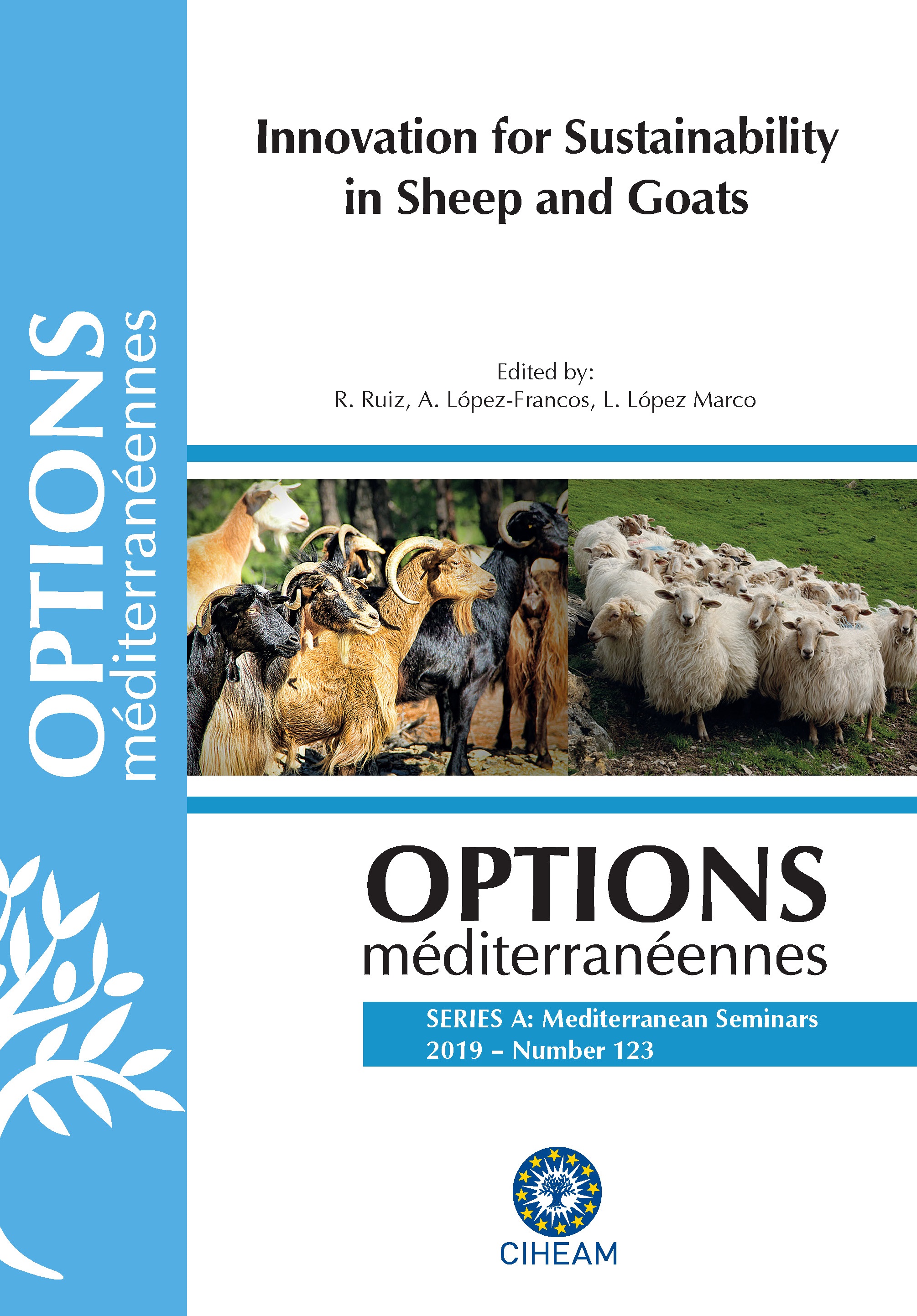| Article précédent | p. 273-276 | Article suivant |
Adaptation of goats feeding systems to the adverse economic conditions by changing the grazing management practices
The economic sustainability of the intensive sheep and goats systems in the Mediterranean region has been compromised by the current economic crisis, which has worsened the impacts of the high costs of purchased feeds and the high dependency on capital. An alternative option to overcome these issues is the extensification of farming systems which provides livestock farmers with the necessary flexibility to adjust their livelihoods according to the external circumstances. Thus, they can modify the grazing system, the daily grazing duration and the supplementation management according to the availability of necessary resources in order to achieve an acceptable level of flock productivity. The purpose of the present study was to investigate the shepherds grazing management practices and the characteristics of the flock’s movement in a communal rangeland. For this purpose, the case of a herded goat farm was investigated for three seasons (spring, summer and autumn) throughout two consecutive years during the economic crisis when the cost of feedstuffs increased and the selling price of milk decreased. Collars with GPS devices were placed on adult female goats’ neck for four consecutive days during each test period. The GPS data were analysed using GIS tools. According to the results grazing spatial patterns per season were differentiated as the shepherd took into account the cost of supplementation, the forage availability per season and criteria to prevent overgrazing.
La durabilité économique des systèmes intensifs de moutons et de chèvres dans la région méditerranéenne a été compromise par la crise économique actuelle, qui a empiré les impacts des coûts élevés des aliments achetés et de la forte dépendance du capital. Une autre option pour remédier ces problèmes c’est l’extensification des systèmes agricoles qui offre aux éleveurs la flexibilité nécessaire pour ajuster leurs moyens de subsistance selon les circonstances extérieures. Ainsi, ils peuvent modifier le système de pâturage, la durée quotidienne du pâturage et la gestion des suppléments selon la disponibilité des ressources nécessaires afin d’atteindre un niveau acceptable de productivité du troupeau. Le but de la présente étude était d’étudier les pratiques de gestion du pâturage des bergers et les caractéristiques du mouvement du troupeau dans un parcours communal. À cette fin, le cas d’une ferme de chèvres chevronnée a été étudié pendant trois saisons (printemps, été et automne) pendant deux années consécutives de la crise économique lorsque le coût des aliments a augmenté et le prix de vente du lait a diminué. Des colliers avec des dispositifs GPS ont été placés sur le coude des chèvres adultes pendant quatre jours consécutifs au cours de chaque période d’essai. Les données GPS ont été analysées à l’aide d’outils GIS. Selon les résultats, les modèles spatiaux de pâturage par saison ont été différenciés car le berger a pris en compte le coût de la supplémentation, la disponibilité fourragère par saison et les critères pour prévenir le surpâturage.
- [ Afficher ]
- [ Télécharger ]
- [ Exporter la citation ]
Vous pouvez télécharger la citation au format :
- [ Imprimer ]
-
Mots-clés
ELEVAGE EXTENSIF, GPS SYSTEME POSITIONNEMENT GLOBAL, PARCOURSCiter cet article
Manousidis T., Kyriazopoulos A.P., Semenzato P., Sturaro E., Ramanzin M., Ragkos A., Abas Z. Adaptation of goats feeding systems to the adverse economic conditions by changing the grazing management practices. In : Ruiz R. (ed.), López-Francos A. (ed.), López Marco L. (ed.). Innovation for sustainability in sheep and goats. Zaragoza : CIHEAM, 2019. p. 273-276. (Options Méditerranéennes : Série A. Séminaires Méditerranéens; n. 123). 2. Joint Seminar of the Subnetworks on Nutrition and on Production Systems of the FAO-CIHEAM Network for Research and Development in Sheep and Goats, 2017/10/03-05, Vitoria-Gasteiz (Spain). http://om.ciheam.org/om/pdf/a123/00007897.pdf



